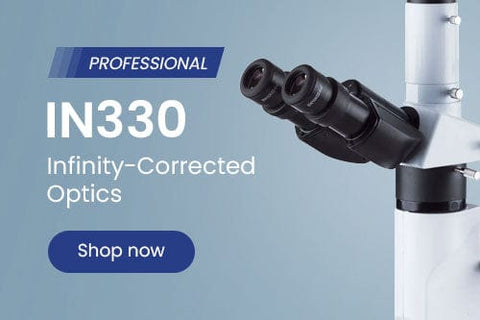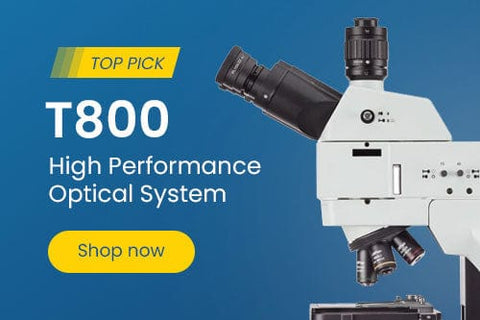- Microscopes
- Cameras
- Lab Supplies & Equipment
- Shop By Brand
- Lab Supplies by Category
- Analyzer Consumables
- Balances
- Bags
- Beakers
- Bench Scale Bases
- Bottles
- Bottletop Burettes
- Bottletop Dispensers
- Boxes
- Blank Microscope Slides & Cover Slips
- Blood Collection
- Caps
- Carboys
- Centrifuges
- Centrifuge Tubes
- Cold Storage
- Containers
- Cryogenic Vials
- Culture Tubes
- Cylinders
- Dispensers
- Digital Dry-Baths
- ESR Products
- False Bottom Tubes
- Flat Bottom
- Funnels
- Gel Documentation
- Glassware
- Glass Test Tubes
- Histology
- Homogenizers
- Hotplates-Stirrers
- Inoculation Loops and Spreaders
- Liquid Handling Products
- Manual-Electronic Pipettors-Pipettes
- Microscope Slides
- Overhead Stirrers
- Pipette Controller (Serological Filller)
- Pipette Tips
- Plastic Test Tubes
- PCR Tubes, Strips & Plates
- Racks
- Repeater Pipettor
- Rockers
- Rotary Evaporators
- Serological Pipettes
- Shakers
- Spectrophotometers
- Syringe Tips
- Sample Tubes
- School/Classroom Supplies
- Screwcap Test Tubes
- Self-Standing
- Test Tube Racks
- Test Tubes & Vials
- Transport & Storage Tubes
- Thermal Mixers
- Transfer Pipets
- Urinalysis
- Vacuum Pumps
- Weighing Dishes
- Lab Equipment
- Balances
- Bench Scale Bases
- Centrifuges
- Digital Dry-Baths
- Gel Documentation
- Homogenizers
- Hotplates-Stirrers
- Overhead Stirrers
- Pipettors
- Rockers
- Rotary Evaporators
- Shakers
- Serological Pipettes
- Spectrophotometers
- Thermal Mixers
- Vacuum Pumps
- Liquid Handling Products
- Manual-Electronic Pipettors-Pipettes
- Pipette Tips
- Racks
- Pipette Fillers-Controllers
- Repeater Pipettor
- Syringe Tips

Cost effective products and solutions designed to improve laboratory efficiency, safety and results.
SHOP BENCHMARK SCIENTIFIC >
- Slides & Accessories
- Slides
- Cameras
- Illuminators
- Adapters
- Eyepieces / Objectives
- Bulbs
- Magnifying Lamps
- Monitors and Tablets
- View All Categories
- Adapters
- DSLR Adapters
- USB Camera Adapters
- Ring Light Adapters
- Power Adapters
- Barlow Lens
- Books & Experiments Cards
- Bags & Cases
- Bags
- Cases
- Cameras
- Circuit Board Holders
- Cleaning Kits
- Condensers
- Darkfield
- Phase Contrast Kits
- Polarizing Kits
- Dust Covers
- Eye-Guards
- Eyepieces
- 20mm
- 23mm
- 30mm
- 30.5mm
- Filters
- Microscope Filters
- Illuminator Filters
- Fluorescence Kits
- Conversion Kits
- Filter Cubes
- Focusing Racks
- Fuses
- Illuminators
- Bulbs
- LED Illuminators
- Fiber Optic Illuminators
- Fluorescent Illuminators
- Ring Lights
- Stand Lights
- Goosenecks
- Gooseneck Attachments
- Immersion Oils
- Loupes
- Magnifying Lamps
- Clamp Lamps
- Desktop Lamps
- Rolling Stand Lamps
- Mechanical Stages
- Monitors and Tablets
- Calibration Slides & Stage Micrometers
- Stage Warmers
- Stain Kits
- Stands
- Articulating Arm Stands
- Boom Stands
- Table Stands
- Tweezers
- Other Accessories
- Shop By Industry
- Shop By Industry
- Botany
- Agronomy & Forestry
- Horticulture
- Phytopathology
- Chemistry
- Biochemistry
- Biotechnology
- Cannabis
- Pharmaceutics
- Consumables
- Beer & Wine
- Cosmetics
- Food & Beverage
- Electronics
- Circuit Boards & General Electronics
- Mobile Phone Repair
- Semiconductors & Wafers
- Environmental
- Asbestos
- Ecosystem Research
- Mud Logging
- Soil Treatment
- Water Treatment
- Forensics
- Ballistics
- Fingerprint Analysis
- Genetic Identification
- Hair & Fiber Analysis
- Handwriting Analysis
- Industrial
- Aerospace
- Automotive
- Dental Lab & Production
- Glass Industry
- Industrial Inspection
- Mechanical Parts
- Paper Industry
- Petrochemical
- Plastics
- Printing Industry
- Quality Assurance & Failure Analysis
- Textiles & Fibers
- Tool Making
- Wood Production
- Jewelry & Gemology
- Engraving
- Gemology
- Jewelry Repair
- Stone Setting
- Watch Repair
- Hobby
- Coins & Collecting
- Stamps
- Modeling & Assembly
- Sculpting
- Repair
- Telescopes
- Metallurgy
- Archaeology
- Geology
- Mining
- Petrology
- Medical & Microbiology
- Anatomopathology
- Bacteriology
- Biochemistry
- Cell Culture
- Cytology
- Dental Microbiology
- Dermatology
- Dissection
- Gout & Rheumatology
- Hair & Fiber Analysis
- Hair Transplant
- Fluorescence
- Hematology & Live Blood Analysis
- Histopathology
- Mycology
- Medical Devices
- Microsurgery
- Neuropathology
- Oncology
- Parasitology
- Pathology
- Semen Analysis
- Virology
- Veterinary & Zoology
- Breeding & Semen Analysis
- Entomology
- Fecal Smears & Floats
- Marine Biology
- Ornithology
- Veterinary Medicine
- Zoology
- Shop By Industry
- Students
- Telescopes
- Buy With Prime
- Sale
Explore The Gift Lab
- Compound Microscopes
- Shop By Brand
- AmScope
- Euromex
- Omax
- Shop by Head Type
- Binocular
- Monocular
- Trinocular
- Multi-head & Training
- Shop By Specialty
- Brightfield
- Darkfield
- Phase Contrast
- Inverted
- EPIfluorescence
- Polarizing
- Digital Integrated
- Metallurgical
- Shop By Application
- Education
- Research
- Veterinary
- Compound With Digital Head
- Shop Best Sellers
- Shop All Compound
- Stereo Microscopes
- Shop By Brand
- AmScope
- Euromex
- Shop By Objective Type
- Fixed Power
- Zoom Power
- Single Lens
- Common Main Objective
- Shop By Stand Type
- Articulating Arms
- Boom Stands
- Gooseneck Stands
- Table Stands
- Other Stands
- Shop By Head Type
- Binocular
- Monocular
- Trinocular
- Simul-Focal
- Shop By Industry
- Video Inspection
- Industrial Inspection
- Microscope Heads
- Shop Stands
- Articulating Arm
- Boom Stands
- Table Stands
- Stereo With Digital Head
- Shop Best Sellers
- Shop All Stereo
- Specialized Microscopes
- Digital Microscopes
- Kids, Student Microscopes
| AmScope Blogs
Understanding the Different Types of Microscope Objective Lenses
The objective lens is the most important optical component of the microscope. It’s the part that sits in closest proximity to the specimen being examined, gathering light to produce optimal images for observation and analysis. This lens creates the first magnification by spreading out the light’s rays to make the object appear considerably larger by the time it meets your field of view at the other end of the eyepiece. Such a critical piece of equipment doesn’t come in a one-size-fits-all package. Below, we will discuss some of the different types of microscope objective lenses and the unique roles they play in microscopy.
Correcting for Aberration

Achromatic lenses are used to diminish chromatic and spherical aberrations which are the loss of color and focus that can happen when light wavelengths refract in direct light. These aberrations can be controlled by using an objective lens that contains both a convex and concave lens inside. Mounting these two different types of lenses to each other can bring wavelengths of red and blue light closer together, which puts them in the same focus and cancels out chromatic aberration. Another type of lens used to correct for both color and spherical aberration is the plan (or planar) lens. These produce a flatter field and can also give you a much larger working distance. However, they can be more expensive than achromatic lenses, so choosing between the two depends largely on how much power you need in your objective lens, and whether or not you need to adjust for field curvature, which only plan lenses can do. Achromatic lenses and plan lenses both come in dozens of magnifications and types, accommodating a wide variety of microscopy needs.
Infinity Correction
Infinity objective lenses did not become common until the 1980s but have since carved out a permanent spot in the microscope objective market. Previously, all microscopes had a standard tube length–the distance from the eyepiece to the objective lens was always 160 mm. Once microscope manufacturers began developing microscopes with varying tube lengths, lens manufacturers had to catch up with the changing technology. New tube lengths meant that microscopy equipment developers needed to adjust for these changes in their accessories, including objective lenses. Infinity optical systems use multiple sets of lenses within the lens house to correct a wide range of tube lengths–typically from 160-200 mm. This enables the lenses to be more versatile between microscopes of varying tube lengths.
Phase Contrast Microscopy

Obtaining high-contrast images of transparent specimens is difficult, especially when your specimen is alive and moving on a slide. Phase-contrast lenses allow you to observe microorganisms without having to fix and stain them. When your specimens are kept alive, a variety of biological functions can be examined and analyzed in real-time. Phase plates at the top of the objective lens diffract light, allowing these specialized lenses to tap into tiny changes in wavelength amplitude, which appears to the viewer as starker contrast on the slide. This makes the specimen much easier to view and observe.
Other Parts to Consider
Specialized microscopes, such as metallurgical microscopes, require their own specific metallurgical objective lenses. These devices are most often used to examine structural detail of ceramics, metals and other non-living materials. Another common microscope objective accessory is a Barlow lens. These can be added to the bottom of an objective lens to either increase or decrease its working distance, field of view or magnification. Since they can be interchanged between lenses, they are a cost-effective way to change the power and magnification of lenses you already own. Lastly, if all these lenses are starting to seem overwhelming, remember one quick trick for determining magnification at a glance: look at the band of color near the bottom of your objective lens. While the magnification number is usually written right on the lens, you can also quickly determine its strength by the color ring. Red indicates 5x magnification, while yellow means 10x, light blue means 40x and white can mean 100-250x.

There are hundreds of unique objective lenses to choose from, but once you have a greater understanding of the most common types, you can make a more informed decision regarding which lens is right for you. Whether you are a hobbyist or whether you require the use of a microscope in your day-to-day research, it’s important to gain an understanding of the strengths and weaknesses across the spectrum of objective lenses. Once you know exactly what you’re looking for, you’ll be well on your way to obtaining the best results and having an optimal viewing experience.
Free Shipping on orders $149+
Same day shipping for orders within the contiguous U.S.
Easy Returns
Hassle-free 30-day return policy. 100% satisfaction guarantee.
Quality Products
5-year warranty on AmScope microscopes.
Got a question?
Speak to our team of experts and find the products you need.
















